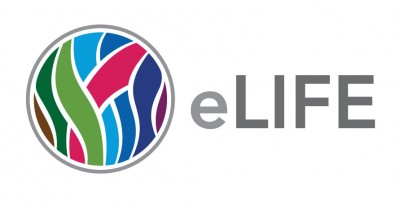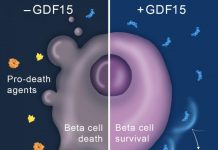Findings point to a novel way to treat diabetes – but only in some patients. They also challenge the benefits of the strategy in severely diabetic patients.

Blocking the hormone that raises sugar levels in the blood could increase insulin levels while keeping blood sugar levels down.
The findings in mice, to be published in eLife, point to a novel way to treat diabetes – but only in some patients. They also challenge the benefits of the strategy in severely diabetic patients.
“Inhibiting the hormone glucagon has recently been explored as an alternative or supplement to insulin injection, but it has limitations,” says lead author Pedro Herrera from the University of Geneva.
“Our research reveals why: the body needs to have some residual insulin production in order for a treatment blocking glucagon to work.”
Continue Reading Below ↓↓↓
Other recent studies have suggested that diabetes is caused solely by an excess of glucagon rather than a deficiency of insulin. These studies found that blocking glucagon prevents excessively high blood glucose levels, despite a complete lack of insulin. They suggested that blocking glucagon rather than regularly injecting insulin could be a treatment for hyperglycemia.
However, the current findings indicate that the models used were not totally lacking in insulin and that just blocking glucagon was only effective if some insulin was still being produced. For the new research, the scientists used transgenic mice in which insulin could be more efficiently eliminated. These mice became severely diabetic.
Around three quarters of patients with type 1 diabetes possess a small number of the beta cells needed to produce insulin. In these patients, blocking glucagon, in addition to insulin replacement, could help keep blood sugar levels in check. It could also result in some glucagon-producing alpha cells converting into beta cells and producing more insulin.
Sugar accumulates in the blood after a meal, triggering the release of insulin from the pancreas to allow tissues to use and store it. During fasting or exercising, glucagon is released and opposes the action of insulin. The balance between the two pancreatic hormones keeps blood sugar levels steady.
Using insulin therapy and blocking glucagon as a combined treatment could in some cases provide a more effective and safer way to maintain a healthy balance and avoid the peaks and troughs of blood sugar levels. Beyond that, future therapies could focus on regenerating beta cells by reprogramming alpha cells.
The number of people with diabetes has risen from 108 million in 1980 to 422 million in 2014, affecting 8.5% of over-18s. Diabetes is a major cause of blindness, kidney failure, heart attacks, stroke, and lower limb amputation. Type 1 diabetes commonly starts in childhood and is caused by the body’s own immune system, which attacks and destroys the insulin-producing cells in the pancreas.
Reference
The paper ‘Blockade of glucagon signaling prevents or reverses diabetes onset only if residual ß-cells persist‘
eLife is supported by the Howard Hughes Medical Institute, the Max Planck Society, and the Wellcome Trust. Learn more at elifesciences.org.
Source: eLife
Journal: eLife
Continue Reading Below ↓↓↓










